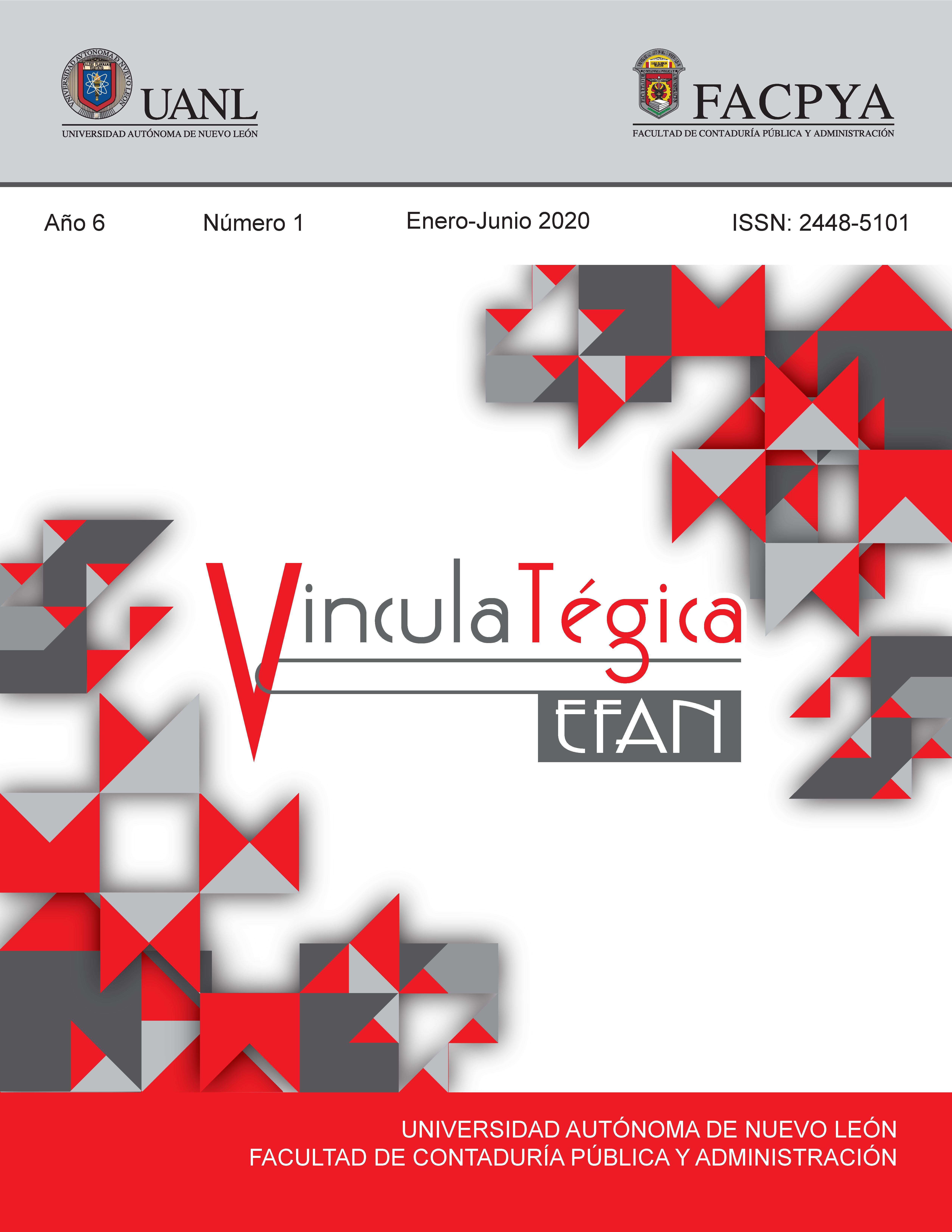Modelo de optimización para los requerimientos de la programación de la producción aplicado a las líneas de camiones pesados
DOI:
https://doi.org/10.29105/vtga6.1-545Keywords:
Secuenciación, simulación, industria automotriz, PromodelAbstract
The problem of the sequencing of production is one of
the most complex problems that is frequently found in
the automotive industry when producing a variety of
products in the assembly lines. The objective of this
article is to propose a model of the sequencing of the
production of automotive components, where the main
objective is to define which are the process variables that
affect the number of units produced, the time of
completion of the unit (since it enters the first station
until it leaves the assembly lines) and the percentage of
utilization of the workstations. Currently, computer
simulation is one of the most used tools to analyze,
design and evaluate complex production processes and
being able to make decisions of the real system without
affecting it.
Downloads
References
Aguirre, A., Múller, E., Seffino, S., & Méndez, C. (2008). Applying Simulation-Based Tool to Productivity Management. Winter Conference, 19(1), 1838-1846.
Artigues, C., Belmokjtar, S., & Feillet, D. (2004). A New Exact Solution Algorith for the Job Shop Problem with Sequence-Dependent Setup Times. Integration of AI and OR Techniques in Constraint Programming For Combinatorial Optimization Problems, 37-49. DOI: https://doi.org/10.1007/978-3-540-24664-0_3
Barra, M. J., & Ferreira, A. (2007). Application of design of experiments on the simulation. Winter Simulation. Conference Washington D.C. 1601-1609.
Belsley, D.A., Kuh, E. Welsch, R.E. (1980). Regression Diagnostic: Identifying Influential Data and Sources of Collinearity. John Wiley & Sons, Inc. DOI: https://doi.org/10.1002/0471725153
Bertoncello, R.,Iuso, Romina (2016). Turismo urbano en contexto metropolitano. Revista Colombiana de Geografía, 25(2):107. DOI: https://doi.org/10.15446/rcdg.v25n2.56905
Burbano, J.F. (2011). Optimización del Tamaño de Lote de Producción Ajustado Por la Trazabilidad. Tesis de Licenciatura. Universidad del Valle Santiago de Cali.
Carro, R. & González, D. (2005). Administración de Operaciones. Buenos Aires: Universidad Mar del Plata.
Chase, R. B., Jacobs, F., & Aquilano, N. (2010). Administración de operaciones. México: McGraw-Hill.
Drexl, A. & Kimms, A. (2001). Sequencing JIT Mixed- Model Assembly Lines Under Station-Load and Part - Usage Constraints. Management Science. 47(3), 480-491. DOI: https://doi.org/10.1287/mnsc.47.3.480.9777
Duanmu, J. & Taaffe, K.. (2007). Measuring Manufacturing Throughput Using Takt Time Analysis and Simulation. Proceedings - Winter Simulation Conference. 1633-1640. DOI: https://doi.org/10.1109/WSC.2007.4419783
Focacci, F., Laborie, P., & Nuijten, W. (2000). Solving Scheduling Problems with Setup Times and Alternative Resources. AIPS 2000 Procedings, 92-101.
Goldratt, E.M., Cox, Jeff (1986). The Goal: A Process of Ongoing Improvement. National Productivity Institute. North River Press.
Graham, R. (1966). Bounds for Certain Multiprocessing Anomalies. The Bell System Technical Journal. 45(9), 1563-1581. DOI: https://doi.org/10.1002/j.1538-7305.1966.tb01709.x
Instituto Nacional de Estadística y Geografía (INEGI). Consultado 17-03-2017 en https://www.inegi.org.mx/app/indicadores/
Ismail, N., Tai, S., & Leman, Z. (2002). Improving Productivity and Efficiency of a Vehicle Seat Assembly Line in a Manufacturing Company. Student Conference on Research and Development. 94-97. Malaysia. DOI: https://doi.org/10.1109/SCORED.2002.1033065
Jara, L. (2015). Manual Técnico. Obtenido de http://www.observatorio.unr.edu.ar/utilizacion-de-la capacidad-instalada-en-la-industria-2/
Krajewski, L., Ritzman, L. & Malhotra. (2011). Administración de Operaciones: Procesos y Cadenas de Valor. 8va. Edición. México: Prentice Hall.
Krystek, J., Alszer, S. (2016). The Role of Buffer Warehouse in Selected Production Systems. International Conference on Industrial Logistics. 119-126. Zakopane, Poland.
Mastrolilli, M., Gambardella, L.M. (1998). Effective Neighborhood Functions for the Flexicle Job Shop Problem. Technical Report. 45-98.
Ministerio de ciencia, Tecnología e Innovación Productiva. Consultado en 17-03-2017 en https://www.argentina.gob.ar/ciencia 71
Mucientes, M., Vida, J., Bugarin, A., & Manuel, L. (2008). Processing times estimation in a manufacturing industry through. 3rd International Workshop on Genetic and Evolving Fuzzy Systems. 95-100. Germany. DOI: https://doi.org/10.1109/GEFS.2008.4484574
Organización Internacional de Constructores de Automóviles (OICA). Consultado 17-03-2017 en http://www.oica.net/
Parello, B., Kabat, W. & Wos, L. (1986). Job-Shop Scheduling Using Automated Reasoning: A Case Study Of the Car-Sequencing Problem. Journal of Automated Reasoning. 2(1), 1-42. DOI: https://doi.org/10.1007/BF00246021
Solnon, C., Cung, V., & Nguyen, A. (2005). The car sequencing problema: Overview of State-o f-the-art Methods and Industrial Case-Study of the ROADEF’ 2005 Challenge Probelm. European Journal of Operational Research. 191(3), 912-927. DOI: https://doi.org/10.1016/j.ejor.2007.04.033
Tiacci, L. & Saetta, S. (2007). Process-oriented simulation for mixed-model assembly lines. 2. 1250-1257.
Trakultongchai, A., Supsomboon, S., & Limtanyakul, K. (2013). Process Simulation and Improvement of Automotive Paint Shop. International Journal of Mining Metallurgy & Mechanical Engineering (IJMMME). 1(1), 1-4
Ülgen, O., Gunal, A. (1998). Simulation in the Automotive Industry. In: Banks, J. (ed.) Handbook of Simulation: Principles, Methodology, Advances, Applications, and Practice, 547–570. John Wiley & Sons, Incorporated, New York. DOI: https://doi.org/10.1002/9780470172445.ch15
Ülgen, O., Upendram, S. S. (1995). Productivity simulation in the automotive industry.University of Michigan and Production Modeling Coporation. 1(1), 1-6.
Valero-Herrero, M., Garcia-Sabater, J. & Rafael, J. (2011). Planteamiento dinámico del problema de secuenciación en líneas de montaje con mezcla de modelos. International Conference on Industrial Engineering and Industrial Management. 1(1), 1-9.
Wirabhuana, A., Haron H. & Imtihan, M. (2008). Simulation and Re-Engineering of Truck Assembly Line. Second Asia International Conference on Modelling & Simulation (AMS). 783-787. Kuala Lumpurpp. DOI: https://doi.org/10.1109/AMS.2008.82
Downloads
Published
How to Cite
Issue
Section
License

This work is licensed under a Creative Commons Attribution 4.0 International License.
a). Authors keep copyright and give the journal the right of the first publication of the work under a Creative Commons attribution license. This license allows others to share the work as long as original authorship and initial publication in this journal is acknowledged.
b). Authors may make other independent and additional contractual agreements for the non-exclusive distribution of the version of the article published in this journal (e.g., include it in an institutional repository or publish it in a book) as long as they clearly indicate that the work was published for the first time in this journal.







